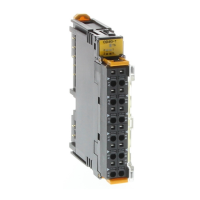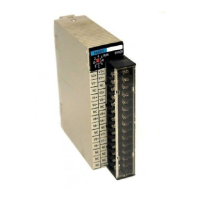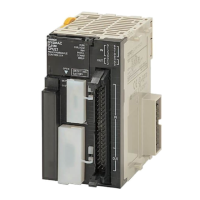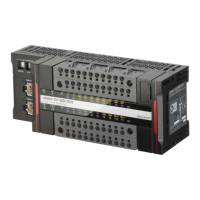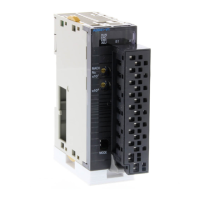156
Overview of the Temperature Input Units Section 6-1
6-1 Overview of the Temperature Input Units
This section provides an overview of the Temperature Input Units, including
details on functions and setting methods.
6-1-1 Temperature Input Units
In addition to the functions common to the GRT1 Series (backup, restore,
online conversion, etc.), other functions specific to the Temperature Input
Units (scaling, peak/bottom hold, etc.) are available. The Temperature Input
Units are also able to internally perform math on temperature input values,
which previously required ladder programming in the host PLC. Temperature
data can be selected from the six values obtained from math operations and
allocated as I/O in combination with Status Flags or other status information.
The Setting Tool can be used to allocate this status data, to make settings for
monitoring and specific Temperature Input Unit functions, and to monitor
operation.
6-1-2 Comparison with Previous Models with Platinum Resistance
Thermometer Inputs
Series GRT1 Series DRT2 Series
Model GRT1-TS2P GRT1-TS2PK DRT2-TS04P
Input type Platinum resistance thermometer input
Maintenance method Terminal block and main block can be
separated.
Removable terminal block
Input type setting method Hardware DIP switch setting, software Setting Tool. Each input bit can be set up
individually when using the Setting Tool.
Input type (sensor type)
PT100 (
−200 to
850°C) or
PT100
(−200 to
200
°C)
PT1000 (−200 to
850°C) or
PT1000 (−200 to
200
°C)
PT, JPT, PT2, or JPT2
Input accuracy
−200 to 850°C input range: (±0.3% of indication value or ±0.8°C, whichever is
larger) ±1 digit max.
−200 to 200°C input range: (±0.3% of indication value or ±0.5°C, whichever is
larger) ±1 digit max.
Conversion cycle 250 ms/2 points 250 ms/4 points
1/100 display mode The temperature data is multiplied by 100 and sent to the Master as 8-digit
binary data. (The data for each input consists of two words.)
DRT1-compatible 1/100 display mode Not supported. Supported.
Unit power supply Supplied from slice bus. Supplied from communications
power supply.
Communications power supply current
consumption
None 70 mA max.
Connections None Poll, Bitstrobe, and COS/cyclic
Allocated I/O data Default: Temperature data for 2 points
The Setting Tool can be used to allocate
the peak value, bottom value, top value,
valley value, rate of change, comparator
results, Status Flags, etc.
Default: Temperature data for 4
points
The DeviceNet Configurator can be
used to allocate peak value, bottom
value, top value, valley value, rate of
change, comparator results, Status
Flags, etc.
Node address setting No setting required. Set using the rotary switches or the
DeviceNet Configurator.
Baud rate setting No setting required. Automatically detected: Uses baud
rate set for Master Unit.
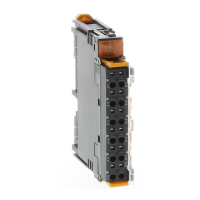
